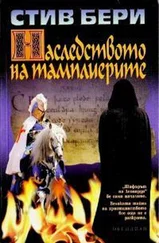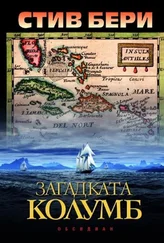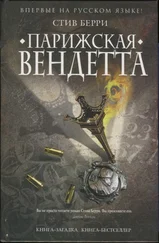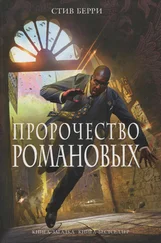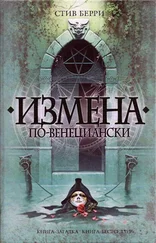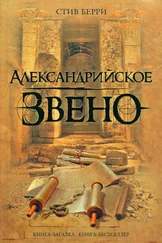The Russians were indeed the first to take the Führerbunker in May 1945. They supposedly found the charred bodies of Hitler and Eva Braun buried in the Chancellery courtyard. Hitler’s dentist, Hugo Blaschke, a dental assistant named Käthe Heusermann, and a dental technician named Fritz Echtmann confirmed that the teeth belonged to Hitler and Braun. But that’s all according to the Soviets. No documents or other physical evidence to support that conclusion has survived. The Soviets then secretly buried the remains in Magdeburg, East Germany, along with the bodies of Joseph and Magda Goebbels and their six children. Twenty-five years later, on April 4, 1970, a KGB team exhumed five wooden boxes from the site. Those were then burned and crushed, after which the ashes were thrown into the Biederitz River.
Why was this necessary?
No one knows.
What is known is that Stalin continually misled the West, asserting that Hitler had escaped and was on the run. That fear kept everyone off guard. We also know that the FBI and the fledgling American intelligence agencies of the time actively searched for Hitler across the globe. In 2000 a skull fragment (chapter 10), supposedly belonging to Hitler, surfaced in Moscow. But DNA testing in 2009 revealed that it was from a woman, not a man. Could it have been Eva Braun? Not likely, since there is no evidence that she was shot in the head and the skull possessed a clear bullet hole. So to this day there is no definitive evidence that Hitler or Braun died on April 30, 1945. An excellent book on this entire subject is Grey Wolf by Simon Dunstan and Gerrard Williams.
The presence of Nazi memorabilia both in South America and inside Theodor Pohl’s castle is nothing unusual (chapters 22 and 72). A great deal of it still exists. As do collectors. In June 2017 a cache of seventy-five rare Nazi mementos was found within a secret room in a Buenos Aires suburb (chapter 19). The find included a memorial dagger, a framed medallion emblazoned with Hitler in bas-relief, commemorative statues, medals, awards, concentration camp products (chapter 75), photographs, and an impressive bust of the Führer himself. Part of the collection also included a pair of head calipers, its handle bejeweled with a black-on-white swastika, used in the determination of so-called Aryan skull shapes.
Martin Bormann remains a mystery. All of the background on him detailed in the novel is true (chapters 9, 10, 20, and 64), as is the label of the Brown Eminence (chapter 25). He definitely fled the Führerbunker after Hitler’s suicide. One account says he was killed in Berlin, his body lost in the rubble, eventually unearthed in 1972 (chapter 10). He was legally declared dead in 1973 with the qualification that his death had not been completely established (chapter 19). DNA testing on the remains that were found happened in 1998. Supposedly the tests confirmed that they were Bormann. But all of that was during the early days of DNA analysis when the science was young and, strangely, the bones were destroyed in 1999, the ashes scattered in the Baltic Sea (chapter 10), preventing any subsequent retesting.
Bormann and Eva Braun’s escape from the Führerbunker (chapters 20 and 54) is wholly my invention. The Bormann sightings noted in chapter 19 are based on actual accounts. In fact, those incidents became commonplace in the 1950s and ’60s. Whether Martin Bormann survived the war is still a matter of debate. But undeniably, he did control the Nazi purse strings. He also engineered Project Land of Fire and Project Eagle Flight (chapters 10, 26, and 54), along with managing Hitler’s Bounty, more formally called the Fund of German Business (chapter 22). Contributions to that were the price corporations paid for the ability to profit from the Third Reich. So much money was accumulated that, by 1945, Hitler was the richest man in Europe. Many German corporations reaped huge rewards from supplying the German war effort. Some even employed slave labor, and an astonishing number of those corporations survive today. In addition, many foreign entities routinely did business with the Third Reich. For example, during the war Sweden sold Germany iron ore and ball bearings, all paid for in gold or Swiss francs. Switzerland became a conduit for money laundering, its privacy laws and numbered accounts Hitler’s salvation. Incredibly, even American entities and banks traded with Germany, right up until 1942 when Congress finally outlawed it.
The meeting in France on August 10, 1944, between Bormann’s representative and German businessmen happened (chapter 26). Afterward, massive amounts of cash, precious metals, gems, patents, and other assets were funneled from Germany to South America. Bormann created nearly a thousand foreign companies, most in neutral countries like Portugal, Spain, Sweden, Turkey, and Switzerland. Over a hundred were in Argentina alone. All were used to both launder and harbor assets. Germans themselves also fled across the Atlantic to South America, both during and after the war, many settling in Argentina and Chile (chapter 27). Today nearly four million of the forty-five million people in Argentina have a German origin.
Lago Girasol (chapter 33) is my invention, but there are many lakes like it in southern Chile. The house described in chapter 34 is also fictional, but it is based on the Inalco residence located near the town of San Carlos de Bariloche in Argentina. This is a ten-bedroom mansion near the Chilean border, on a lake, hidden from view by two small islands that each contain guard towers.
Doesn’t sound like your typical vacation home.
Patagonia has long been a German refuge. Thousands immigrated there in the early part of the 20th century. About one and a half times the size of Texas, bordered on one side by the Andes and on the other the South Atlantic, by 1939 sixty thousand Germans lived there. Nazi Party membership files captured after the war showed a hundred thousand members in Argentina alone. The southern tip of Patagonia is called Tierra del Fuego, Spanish for “land of fire.” So it was no coincidence that Bormann named his plan to launder money and assets out of Germany, Project Land of Fire. The idea was to create a secret, self-contained refuge in an out-of-the-way place. Bormann wanted no repeat of 1929, when Germany was pillaged and decimated. He wanted all of the wealth safeguarded. It helped that Juan Perón rose to power in Argentina during the early 1940s, as Perón was friendly toward the Germans. By 1942 every nation in North and South America had severed relations with Japan, Germany, and Italy, except Chile and Argentina (though Argentina, at least on paper, finally did in 1944).
The town of San Carlos de Bariloche became the center of their safe haven. To this day the whole place oozes an Alpine look and feel. We know that after 1945 several war criminals called it home, and a persistent rumor is that Hitler and Eva Braun escaped to there, too, living for a while in the Inalco residence.
Is that possible?
We’ll never know.
Eva Braun is another mysterious character—Hitler’s mistress who eventually, for a few hours, became his wife. All of her background in the story, including the nickname Evi, is real (chapters 20 and 27). She was a mere footnote to the history around her, but still a key player in an evil game. She detested Bormann and liked to make fun of him behind his back (chapter 54). She never birthed any children, though. But even in the face of the approaching Russian army, she did willingly return to Berlin on April 15, 1945. Why? No one knows. And whether she survived the war will forever remain an unanswered question.
This novel deals with the rise of the new right across Europe. It’s a troubling issue, one that continues to escalate (chapter 64). Incidents of violence and how local courts and law enforcement turn a blind eye (chapter 18) are not fiction. Anger toward Jews and immigrants is steadily increasing (chapter 57). Nationalistic parties across the Continent are gaining more and more followers.
Читать дальше


